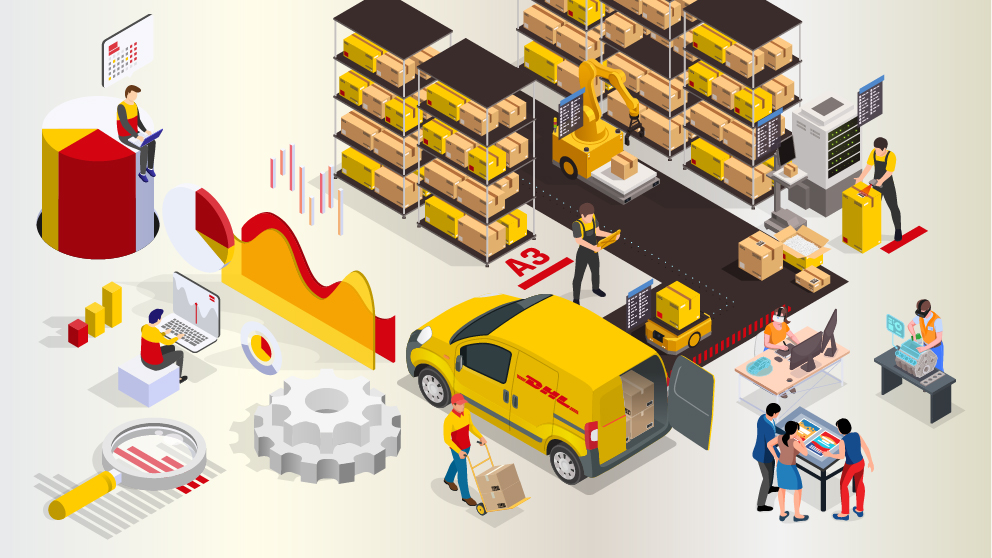We look at how the returns process has been disrupted by Covid-19 and the lessons we can all learn to reduce costs while improving the customer experience.
Impact of Covid-19 on online shopping behavior
For two long years, the world shut down. Covid-19 and the ensuing lockdowns and stay-at-home orders meant shops closed their doors and consumers stayed at home. Naturally, home delivery e-commerce services exploded in popularity almost overnight.
For the retail and e-commerce sector, the pandemic posed some big questions—not just how to cope with a huge increase in demand without warning—but if the pandemic’s impact on consumer behavior would last beyond the pandemic itself. Would e-commerce expand only to contract later? Would consumer habits change forever?
Here are some of the main trends affecting today’s online shopping behaviors:
- The pandemic accelerated the shift to ecommerce. This one is pretty clear for all to see. The pandemic accelerated the shift away from physical stores to online shopping by roughly five years. E-commerce jumped to $26.7 trillion in 2020, accounting for 19% of global retail sales1.
- Return rates are higher for ecommerce. The return rate for e-commerce is at least double (or more, depending on where you get your stats)2. Around 50% of ecommerce firms offer free returns right now3. This looks to be trending towards switching free returns to paid returns, asking consumers for a small fee to cover costs and/or postage.
- Consumers love free and easy returns. According to a survey, 76% of consumers say free returns is an important factor when shopping online4. So think carefully before adding any charges.
Will the pandemic e-commerce boost potentially flatten future growth in the sector? Not according to equity analyst Brian Nowak. Speaking to Talking to banking giant Morgan Stanley, Nowak said: “We believe that the Covid-driven bump will not flatten future e-commerce growth. Across the world, we have yet to see a ceiling for e-commerce penetration.” He sees e-commerce reaching 27% of retail sales by 2026.5
With a seismic change in consumer behavior brought about by the pandemic and stay-at-home orders, e-commerce firms had to act fast. From the growth in direct-to-consumer efforts and new contact-free delivery protocols, companies had to adjust both reactively and proactively, as is covered comprehensively in this article. This has caused many companies to shift their focus to digital solutions such as online ordering, contactless delivery, and virtual shopping experiences.
Companies had to adjust to the new reality of social distancing, with many spending money on safety protocols such as contactless delivery, as well as increasing their investments in digital marketing and analytics to better understand their customers.
During the pandemic, companies rapidly expanded to serve the explosion in e-commerce. At the time, it was widely predicted that the uptick in e-commerce would sustain even after the pandemic had subsided. This has proven to be partly true, but perhaps not in the way it was hoped.
Amazon, whose profits (like many other e-commerce firms) received a significant boost during the pandemic, doubled its workforce during 2020 and 20216. Amazon has since reduced its headcount, with some pointing to an over-expansion during the pandemic that needed correcting7. It should be noted that the tech sector in general is contracting, at least in headcount, so Amazon is certainly not alone.
Impact of Covid-19 on consumer returns
Covid-19 meant the rate of online returns increased. In the US, online returns jumped from 10% in Jan 2020 to 18% in Jan 20218 That means Covid-19 saw an above-pro-rata increase in returns. This can be attributed to e-commerce taking the place of brick-and-mortar sales during the pandemic and therefore taking on some of the return rate associated with stores.
Studies have shown that e-commerce returns increased during the two main years of the Covid-19 pandemic. But it’s not a trend that has continued to the present day. In fact, eMarketer’s numbers say that return rates dropped between 2021 and 20229, and it’s a trend that will continue. Although returns will increase in absolute terms, they will decrease as a percentage of total ecommerce sales.
The returns paradox
Retailers hate returns—it’s costly, eats into profits, and often items being returned don’t make it back to general stock for resale. But consumers love returns. Some studies have found that 84% of shoppers are more likely to shop with an online retailer that offers free returns10. So, for retailers it’s a paradox: you want to reduce your return rate while simultaneously making it easier for customers to make returns. But there are options to make it less painful for retailers and consumers.
Many e-commerce retailers are now introducing fees to cover the costs of returns. It’s a troubling issue in particular for fashion retailers, where returns rates can 40% or even higher.
Fees aren’t the only answer. Companies like Optoro and Returnado give e-commerce retailers a lower-cost route to managing returns. For example, Narvar has introduced a service that lets US customers of brands including Levi’s and Sephora drop off their returns at Walgreens stores. It appears to be a win-win situation—customers have a more convenient returns process, whilst the brands can provide a better service, with fewer expenses.
How can businesses respond?
So, what can your e-commerce business do to ensure its returns process is as efficient as possible?
Consider updating your returns policy. Beyond mitigating any challenges your customers currently have in accessing a shipping service, reducing the urgency to return will also give them a chance to form an attachment to the product; with more time to consider, they may opt to keep it after all. There’s science behind this—the endowment effect11 shows that people place greater value on an object and are more reluctant to give it away once they feel a sense of ownership.
Make the experience as stress-free as possible. Consider offering free home collection. DHL’s door-to-door courier service will pick up your customer’s return and deliver it directly to you. Your customer gets an easy and professional experience, and you get peace of mind that your product will be delivered back to you on time and in perfect condition.
Communicate current changes to your returns policy. Depending on which surveys you read, the percentage of consumers who check your returns policy before buying is around 50-70%. There are customers actively looking for your returns info. A message on your homepage explaining an extension of the returns window may be the small detail needed to secure the sale.
Be transparent. If you are experiencing delays in the processing of returns, be sure to let customers know upfront so that they’re prepared for the wait.
Gather customer feedback. Listen to why the customer is returning the item so you can kickstart change and try to prevent it from happening again. The return rate for e-commerce is around 30%—that’s 20% more than retail purchases12, and with the seller often covering the costs, it can put a sizeable dent in your profits. So, it’s certainly worth investing time in improving your weak spots.
Use high-quality images on your website. 22% of product returns are due to inaccurate depictions of the product13, so be sure to include lots of photos on your website along with descriptions of measurements/materials/maintenance etc. Not only will this prevent unnecessary returns, but you'll be presenting a good website design to your customers. Gymshark is a great example of a brand doing this well—the sports apparel company features multiple photos per product on its website, including close-ups of the material and logo.
Remember the power of online reviews. Consumers pay great attention to reviews. A customer review saying your business processed a return quickly and with minimal hassle is invaluable.
The returns service your business offers is a crucial investment for success. Treat it as an important part of your customer service: satisfied customers become repeat customers, and what customers want is a simple, transparent, and preferably free returns service. We all know that converting a net-new customer takes significantly more time, money and effort than converting an existing customer.
DHL's own research shows that when an e-commerce business offers an easy returns service, it encourages higher basket spend amongst customers. DHL Express's experts can help you integrate a seamless returns solution to your e-commerce checkout.
Contact us today to get started.
1 https://unctad.org/news/global-e-commerce-jumps-267-trillion-covid-19-boosts-online-sales
2 The Right Fit: How AI is Changing eCommerce Apparel Returns | Retail Dive
3 E-commerce companies offering free returns 2021 | Statista
4 https://www.powerreviews.com/insights/consumer-survey-retail-returns-2021/
5 https://www.morganstanley.com/ideas/global-ecommerce-growth-forecast-2022
6 https://www.nytimes.com/2021/04/29/technology/amazons-profits-triple.html
10 https://www.klarna.com/uk/business/rethinking-returns-report-2021/
11 https://en.wikipedia.org/wiki/Endowment_effect
12 https://www.meteorspace.com/2022/08/25/latest-returns-statistics-that-may-surprise-you/
13 https://www.invespcro.com/blog/ecommerce-product-return-rate-statistics/














